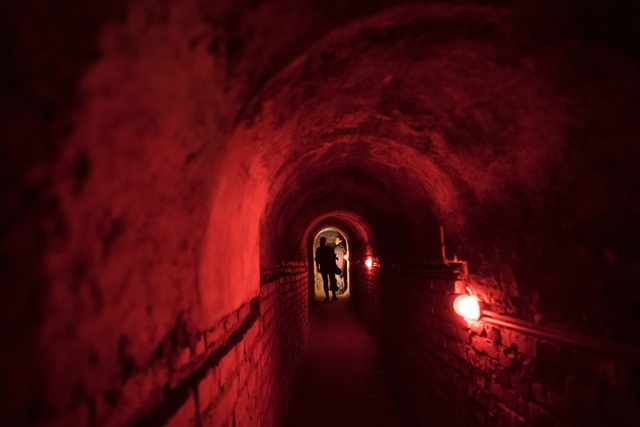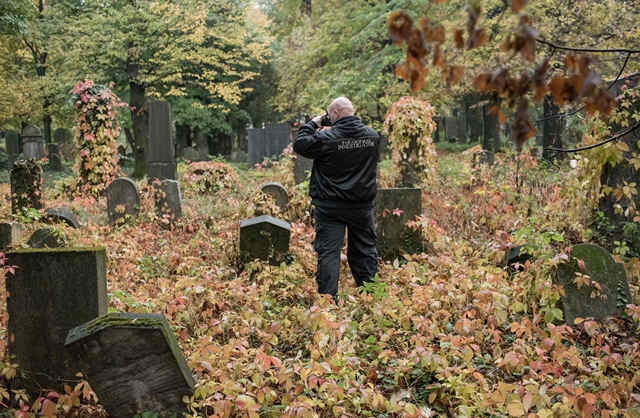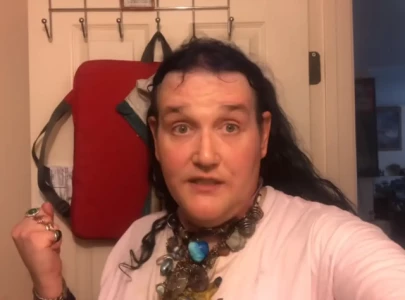
Armed with an array of high-tech gadgets to detect ghostly activity, the leather-clad 26-year-old calls out into this mist: "Is there anybody there apart from us? Do you want to talk to us?" Nothing but raindrops and crows, but they will check their data later. "In the past 15 years we have amassed a great deal of material where you really can see ghosts," Willi Gabler, 36, founder and chief of the Vienna Ghosthunters, told AFP.
Chile seeks help to protect world's oldest mummies
"Our customers include people who are lonely or who need someone to talk... but there are also people who are really having problems. They are scared, they hear noises, footsteps, see shadows. They call us and we go and investigate."
Below the surface, the city of Sissi (Empress Elisabeth of Austria), Strauss and Wiener Schnitzel has a spookier side, much to the delight of adherents of the reportedly growing phenomenon of "dark tourism" -- and not just at Halloween. According to Peter Hohenhaus, the Vienna-based creator of a website detailing hundreds of "dark and weird places" worldwide, this is because locals have a bit of a thing about giving up the ghost.
"Vienna has this reputation of having a special relationship with the topic of death. There is a saying 'Der Tod muss ein Wiener sein' -- 'Death must be a Viennese'," Hohenhaus, 53, wearing a black "dark-tourism.com" T-shirt, told AFP.
"I am sure the Viennese fear death just as much as everybody else. But a way of overcoming that is probably by creating all these rituals. It has a long tradition, we know that."
 "Paranormal Investigator" Willi Gabler from Vienna Ghosthunters looks for paranormal activity at Vienna Central Cemetery on October 20, 2016. PHOTO: AFP
"Paranormal Investigator" Willi Gabler from Vienna Ghosthunters looks for paranormal activity at Vienna Central Cemetery on October 20, 2016. PHOTO: AFPIndeed the Viennese are reputed to want more than anything a "schoene Leich" -- a grandiose funeral, with the Habsburgs, the imperial dynasty that ruled until after World War I, leading the way. A total of 149 of them -- including 12 emperors and 19 empresses and queens -- are buried in the Imperial Crypt in central Vienna, their often opulent sarcophagi adorned with cherubs and skulls wearing crowns. Some 200,000 people visit it every year.
Even more gruesomely, from 1654 to 1878 the tradition was for their royal hearts to be removed. These are now in silver urns below the Church of the Augustinian Friars. Their intestines are under St. Stephan's Cathedral.
The Vienna Crime Museum displays the mummified head of an executed criminal and other grisly artefacts, while the Funeral Museum has death masks and a coffin visitors can lie in. The catacombs under St. Michael's Church contain mummified corpses. The Madhouse Tower, once a mental asylum, houses medical curios like the preserved stomach of a patient who ate the contents of his cell, or a preserved stillborn baby nicknamed "The Devil". Some can only be seen by special arrangement.
Vienna's tourist board is well-attuned to the city's morbid attractions, guiding tourists to the best sites, most recently with a special YouTube video. How many people come just for the macabre is unclear, however, it says. Other sites though are more off the beaten track, for example the creepy labyrinthine cellars underneath Vienna's central first district, many of them four or five stories underground -- deeper than the buildings are tall -- and hundreds of years old.
Even many locals don't know about what's under their feet, said Gabriele Lukacs, a guide and author specialising in macabre Vienna, as she showed AFP around one such 13th-century cellar, formerly part of a nunnery and now a private members' club.
In the Middle Ages, "if nuns fell pregnant they were shut away in the cellar," she said. Babies' bones have even been found. She and a handful of other enthusiasts spend their spare time exploring "tunnels that no one knows about". The cellars were used to store food but also as a place of refuge in times of war like during the Ottoman sieges of 1529 and 1683 or the Allied bombings of World War II. Until the 1960s, they were all linked.
Jesus Christ’s ‘burial slab’ in Jerusalem uncovered for first time in centuries
"Over the last 1,000 years when these cellars were built, there were of course lots of gruesome stories," Lukacs said. "In Vienna there is some sort of energy that pulls things down, down into the cellars, or into the coffin." Many Viennese claim they don't believe in the paranormal, she said, but when it comes to going down into these cellars, they come up with all sorts of excuses not to venture down there.
"There are lots of cellars in Vienna where there are souls that have not been released, of people who were murdered or imprisoned whose souls are still there... I know cellars that nobody will go down to. They claim 'the stairs are too steep'."




1732538123-0/BeFunky-collage-(90)1732538123-0-165x106.webp)


1732518687-0/Copy-of-Untitled-(78)1732518687-0-270x192.webp)









COMMENTS
Comments are moderated and generally will be posted if they are on-topic and not abusive.
For more information, please see our Comments FAQ